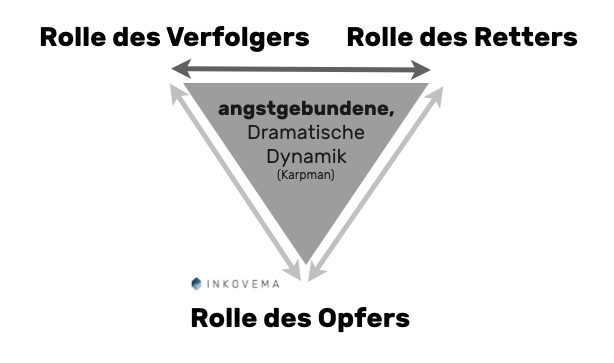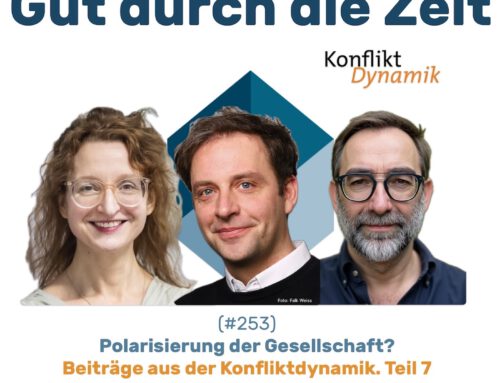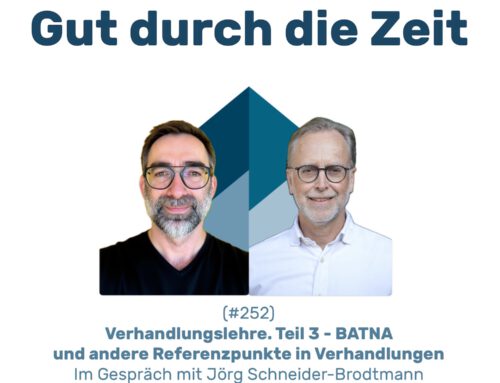The game pentagon of transactional analysis
or analyse organisational conflict dynamics with the „spiced up“ drama triangle.
Introduction
The Game Pentagon (games pentagon) from Oswald Summerton complements the Conflict analysis in organisations. It is a little-noticed, but nevertheless coherent and helpful concept for counselling work in organisations. It is by no means just an analysis tool for counsellors, but can also be used as an intervention tool, i.e. for explicit and transparent counselling work with clients and mediants.
While the Drama triangle illustrates the psychological role and basic attitude from which people act in escalating situations (Persecutor - Rescuer - Victim), the game pentagon shows the social roles that are (or can be) occupied in an organisational conflict system.
The Game Pentagon thus complements the conceptualisation of psychological games, particularly in organisations.
The Game Pentagon for game analysis
What transactional analysis defines as psychological play in its context can be taken up as conflict potential and conflict situations in the context of mediation. Although mediation is not indicated at every point in the game, there is always potential for clarification and mediation discussions.
If we now apply the characteristics of a (transaction-analytical) game according to the Game formula to the Model of the game pentagon (Game Pentagon), then certain overlaps between the two concepts become apparent. People involved in the conflict start from a certain position. They assume this position according to their personal or biographical preferences. Of course, this does not happen without the help of the other participants. Without context, there is never any play. Once those inviting and those invited to play have come together communicatively, so to speak, the conflict dynamics formulated in the game concept can unfold. Sooner or later, the participants change their positions (in the drama triangle) and it comes to the game payoff (in the sense of the game formula).
Summerton formulated a perspective based on the drama triangle and introduced it as follows in the context of transactional analysis into the debate. Summerton constructed his – in contrast to the psychologically-based drama triangle, more of a – sociological model from observations of conflictual situations in organisations.
He proposed the following „placeholders“ for conflict observation, analysis and planning of interventions, thus expanding the range of people involved and also creating the space to structural and cultural conditions of the respective organisation to conceptualise.
1. the sniper (sniper)
Sniper. The Sniper. Not exactly a role description that is suitable for communicating with the conflict parties in mediation.
Nevertheless, – the aim of the formulation is to create clarity. The pedant to the persecutor in the drama triangle is the sniper, who calls the conflict by name, identifies the guilty parties and also names them specifically – and often exposes them in the process. The target of his attacks are the scapegoats for the misery, even though they are not responsible per se, but that is not impossible either.
It is significant that the sniper fuels the conflict dynamics through the way he acts. As in the pursuers' drama triangle, the sniper chooses a tone of voice that makes it difficult to listen calmly. Accusations, public denunciations and blatant denigration narrow the constructive space for dealing with potential conflicts in a level-headed manner.
2. the scapegoat
The Scapegoat is called Scapegoat in the game pentagon. This person (or group) is held responsible for the problem – by the sniper. By establishing responsibility for the misery, an offer of a solution is simultaneously published and presented to the bystanders: The person responsible is also the guilty party and consequently the condemnation and, if necessary, the removal of the guilty party is also the solution to the problem, the redemption from the misery. This is the pull effect consciously or unconsciously developed by the sniper.
Once the labelling of guilt and victimhood has taken place, the call for the problem solver is not far away.
3. the Saviour (Redeemer)
Savior means in the translation "Saviour" or also "Saviour".
The Saviour is given the task, if he has not already taken it upon himself, of solving the problem that has arisen and of saving those involved. hesolve. Such problem solvers can be members of the organisation (internal) or not (external). Particularly in the case of external parties, it is clear and should come as less of a surprise that their profession is the benchmark for the recommended problem solution: Lawyers recommend legal action, mediators mediation and conflict trainers conflict training.
Whatever the solution approaches may be, they are – also due to the expectations of the other participants – more likely to confirm opinions and perspectives than to develop them. They tend to stabilise the established rather than taking up the conflict situation in a learning way and making it available to the organisation as a learning phase. There may be a lot of fuss about the Savior, but ultimately nothing significant happens in the game pentagon.
These conflict roles in organisations are reminiscent of the roles in the drama triangle. Buzzer tone emphasises, however, that it is The roles are not psychological roles, but positions and placeholders that arise in an organisational conflict due to the organisation, structures and processes.

He expands this perspective to include the following players:
4. spectators (spectators)
Every theatre performance is only complete when someone watches and appreciates the performance of the protagonists. This task is usually performed by the audience. In the classical sense, they are not involved in the progress of the play or hardly notice their influence, even if they are highly interested.
Inwardly, however, viewers satisfy their need for stimulation, excitement and the opportunity to talk about it afterwards with other viewers and the majority of those not present (Gossip and gossip). Not infrequently, all this takes place in a Atmosphere of constraint. The audience „must “ endure the conflict between the quarrelling parties, listen to it and find a way of dealing with it. They feel and think credibly, they are victims of the conflicting parties, who draw all the attention to themselves with their conflict. No telephone call, no meeting without the conflict being discussed, even if it is not addressed directly, everyone involved is careful not to say the wrong thing.
Even if the bystanders, the team and organisation members, like the spectators in the theatre, are of the opinion that they are only observing a conflict over which they have no influence, they are still highly effective and influential. The so-called bystanders, as social psychology has established in the 20th century, are important influencing factors for the question of whether the conflict potential of working relationships escalates and has a destructive effect or remains regulated and constructive. The same applies here as there: Staying out is not an option!
It is therefore important Keeping an eye on those around you when analysing conflict dynamics in organisations.
Team members are affected by conflict in every conceivable way.
5. stage manager (stage manager, conductor)
This placeholder is intended for those protagonists who prepare the ground for the organisational game or start it, even if they are not visible at first. They set the conflict in motion through the given framework conditions and perhaps leave it to others to act out the conflict.
The stage manager holds the resources from which the conflict arises and also how it could be resolved. In order to grasp the importance of the stage manager, it is necessary to broaden the perspective to include their diverse and subtle influences: What are his key positions and influences in the conflict? Who does he envisage as the people involved in the course of the drama? What historical, legal or corporate cultural aspects form the backdrop for his actions? How do he and the system benefit from the unrest he introduces? What does he gain from regulating the conflict by putting his foot down or allocating resources?
The mental image the stage manager forms of the specific situation and the mental models and concepts they encounter influence the development of the specific social and organisational situation.

The Pentagon game in organisational mediation
Anyone who found the drama triangle helpful at work will be fascinated by the Pentagon game.
Although the Pentagon game can ultimately only capture and depict (model) a small section of the social reality of an organisational conflict, but already much more than the drama triangle and even more than no model at all.
It is particularly important to emphasise that the Placeholder in the game Pentagon sociological places in organisationsn that (‚must‘) – be filled in conflict situations and not psychological roles. This somewhat reduces the danger of psychologising and personalising the conflict situation, but does not completely rule it out.
The practically the greatest value has, in my opinion, the Pentagon game in its Conceptualisation of the „bystanders“ of a conflict. Team members as well as superiors and colleagues at the same level are conceptually integrated into the model of conflict dynamics. They are not just observers, even if they are called spectators!
Unlike the drama triangle, the game pentagon does not lead to the psychologisation and personalisation of the conflict. Rather, it directs the attention (of the mediator and the mediants) to the context and generates Helpful questionsWhat are the structural framework conditions in this conflict? How is the potential for conflict in co-operation developed destructively instead of being used constructively? How does the social system deal with tensions and bottlenecks and organise relief by focusing and dynamising individual tensions? How is the scapegoat selected? Who benefits from this, who generally distances themselves? (Here too, of course, there is the danger of labelling…now with the placeholders of the Game Pentagon).
In addition, the Game Pentagon helps the mediator and counsellor to own role to reflect, discuss and clarify in communication with the parties involved. Rarely has a mediator not been introduced as a saviour.




[…] Article by Dr Sascha Weigel in the INKOVEMA blog […]
Well presented in the article. We use this for the training „Coaching and counselling with systemic transactional analysis“